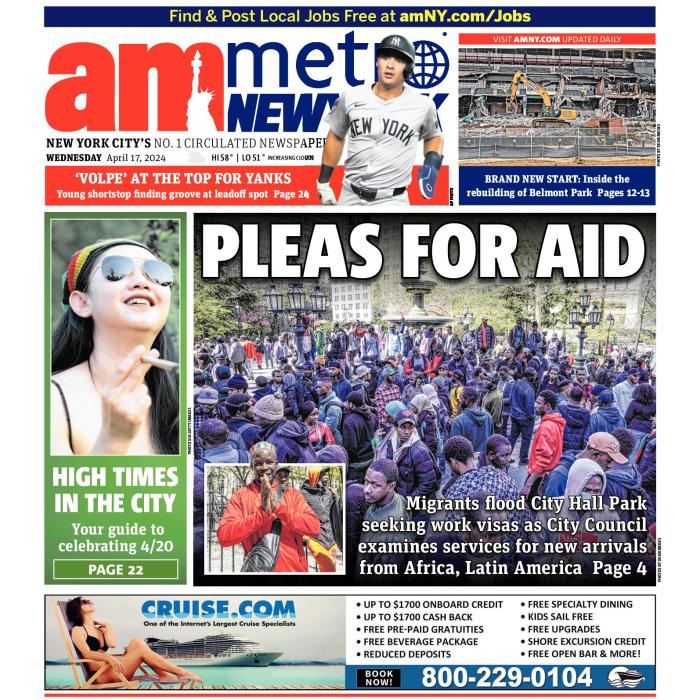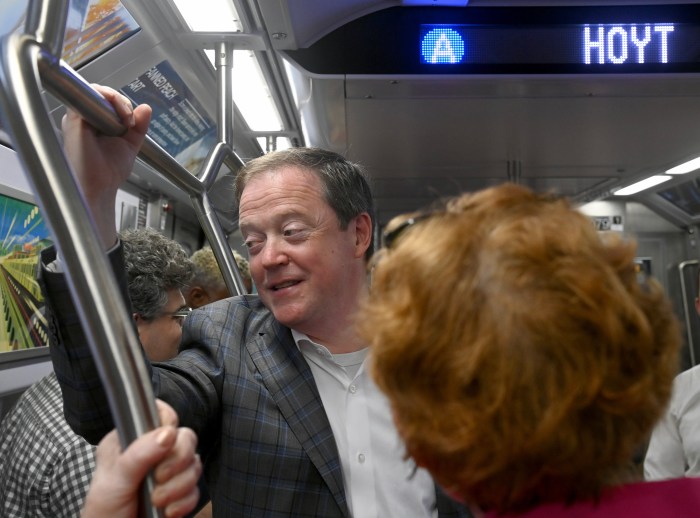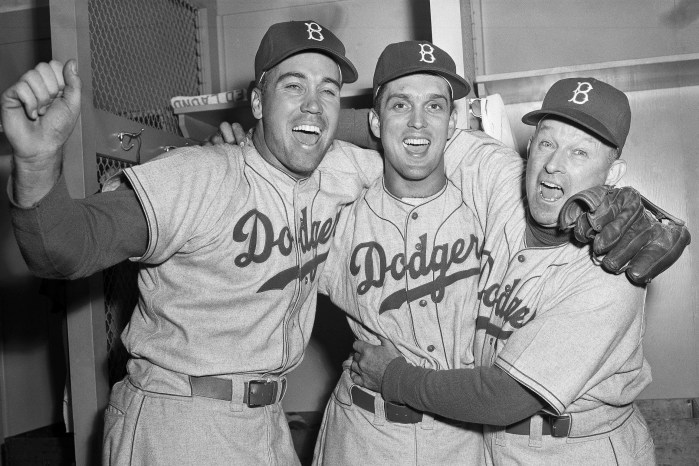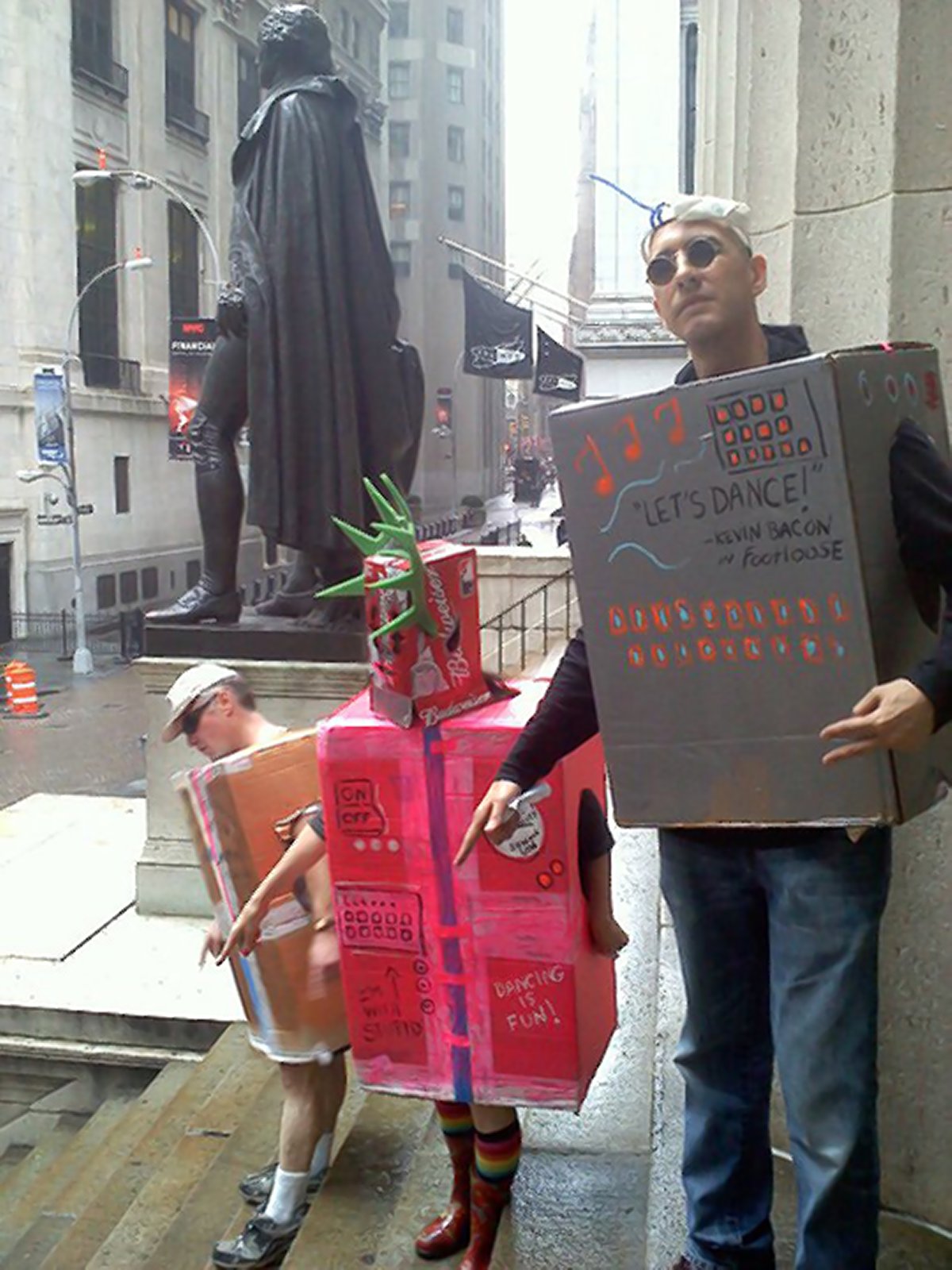
BY REV. JEN | It’s time for a victory dance! After 91 years, New York’s archaic Cabaret Law has been repealed in a 41-to-1 vote. So put on your dancin’ shoes, wave your hands in the air like you just don’t care, head to your favorite watering hole and shake your booty clean off. (We have to wait until 30 days until after de Blasio signs off on the legislation, but it’s never too early to practice your moves at home.)
This victory holds a special space in my heart, as I have been working on the law’s repeal since 1998 when I formed the “Dance Liberation” front, along with fellow Art Stars Robert Prichard and Faceboy.
It all started one morning when I bumped into Robert Prichard, the proprietor of the now-defunct Surf Reality. He told me that the previous evening, Baby Jupiter, a club where I performed every Monday, was busted because their customers had been dancing.
I wasn’t sure I’d heard him correctly.
“Dancing?” I asked.
Rob explained that in order to crack down on nightlife, Giuliani had dusted off a regulation from the 1920s called the “Cabaret Law,” which states that more than four people dancing in an unlicensed venue serving alcohol is illegal. Out of the thousands of bars in New York City, only a handful of the most well-financed clubs were able to obtain the dancing license.
It took a minute to process the Kafkaesque concept: Dancing was illegal in “Fun City.”
Rob suggested we create a group — the Dance Liberation Front or “DLF” to bring to light the heinous crime Guiliani’s nightlife task force was perpetrating on the public.
I sprang into action and wrote a manifesto. It began with the line, “You thought the illegality of dancing was the stuff of science fiction, of Kevin Bacon movies, of small Midwestern Towns… YOU THOUGHT WRONG.” My declaration brought up the many reasons why dancing is good for the human body, mind and spirit and why it was simply un-American to prevent free people from moving their bodies however they saw fit.
“What’s next?” I asked. “No fidgeting, no holding hands, no laughing, no kissing and no smiling… . Pretty soon everyone in Giuliani’s New York will have to sit perfectly still.”
I was curious how the city’s Department of Consumer Affairs defined “dance.” Was it doing “the robot” or shaking your hips? How can you regulate something you can’t define?
After writing the manifesto, I went to the Army-Navy store, where I bought four black ski masks. Next stop was Surf Reality, where we donned our masks and filmed a communiqué for MNN and various media outlets.
Baby Jupiter had been padlocked all weekend and was set to reopen the following Monday night, when a private party for a slew of journalists was scheduled. It was an opportunity we pounced on. Clad in our ski masks and happy disco outfits, Face and Rob handed out manifestos, while I made my way to the sound booth. I took the microphone and read the manifesto, but was quickly chased away by the DJ.
We ran back to Surf Reality where we brainstormed two dance actions to take place the following weekend. One would occur up in Midtown, where we would get a groove on in front of the Richard Rodgers Theatre, where “Footloose, the Musical” was being performed. The other would take place Downtown on a street corner.
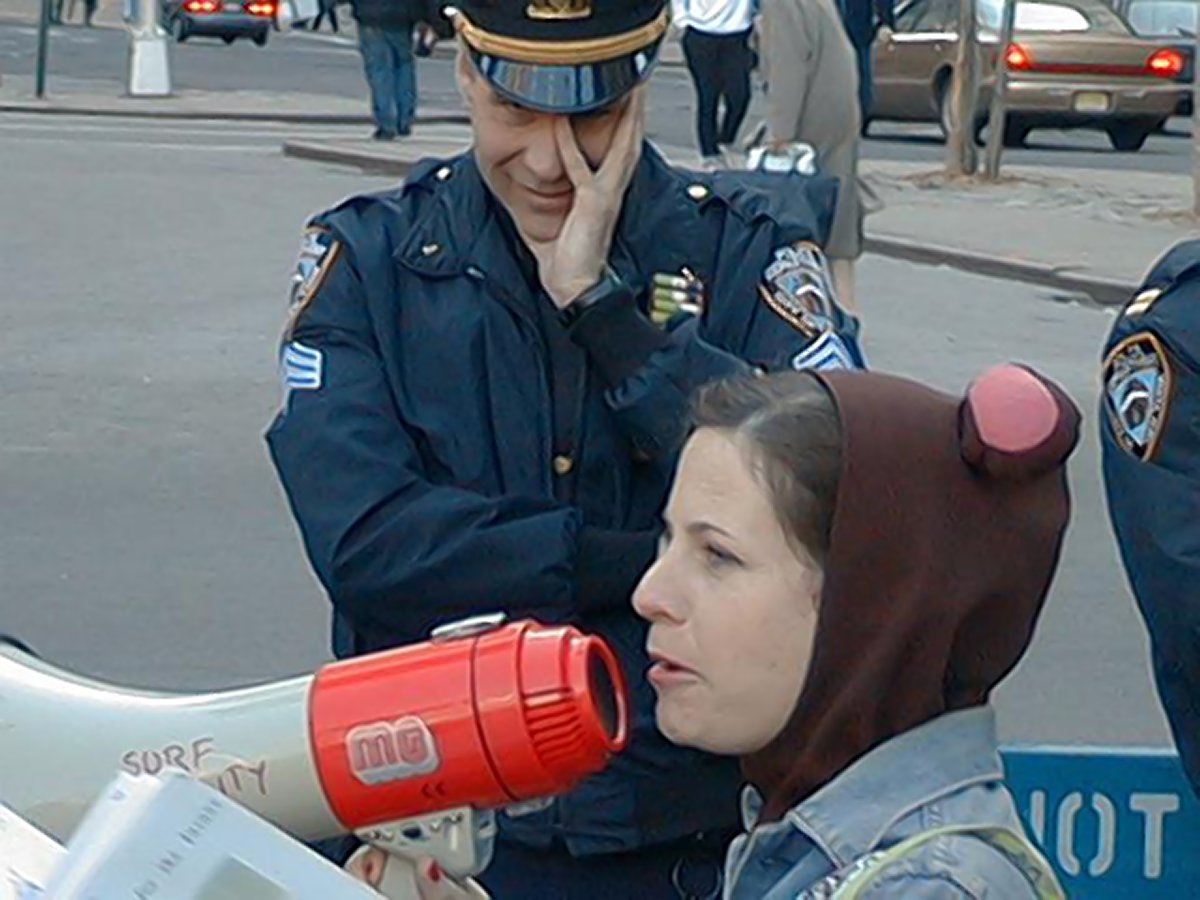
When the following weekend rolled around, we headed uptown with a large group of Art Stars and disco in my boom box. Arriving at the theater, we “cut a rug” in front of “Footloose.” A few of our “Dance Commandos” who attempted to dance inside the theater were ushered out as the police came. But the cops found us entertaining and let us stay for a few more minutes before insisting we be on our way. When we got back Downtown, word was already out and huge crowds of dancers had already assembled in the street to create a liberated dance zone.
Our mission was to make a mockery of the Cabaret Law, thereby garnering media attention and eventually public support for its eradication. We knew that to get attention, we would have to organize a spectacle bigger than our trip to “Footloose.” The answer was obvious: The DLF would organize New York’s longest conga line from Houston St. to Tompkins Square.
Faceboy and I went out, hung posters and left fliers in every bar, shop and cafe in the East Village, trying to recruit dancers willing to conga outdoors in the middle of winter. Our posters caught the eye of journalists, who called us and wanted to write articles on the Cabaret Law. At the time, no one was writing about the law. Hence the authorities were doing what they always do when they think no one is looking: They behaved badly. So we made people look, which is what protests are designed to do.
About two hours before the conga line was set to begin, I walked by the corner of Houston and Essex Sts., where to my horror, at least 100 cops, paddy wagons and N.Y.P.D. motorcycles were stationed awaiting the dance action. I ran to Robert’s and told him and Face.
Faceboy said, “If they tell us we can’t do it, we’ll tell them it’s O.K. We’ll leave slowly, in a line, with a beat playing.”
With trepidation, we walked over to Houston and Essex, where Faceboy spoke to the cops, some of whom remembered us from the “Footloose” action. To our relief, we discovered they weren’t there to stop us; they were there to escort us and ensure our safety. Our conga line now had police escorts.
Hundreds of Dance Commandos showed up, clad in ridiculous costumes and evening wear. There was even a group of people dressed as giant insects. I wore a Teletubby costume and carried an American flag, since I felt what we were doing was both silly and patriotic.
Finally, we were off, beginning to conga while singing to a conga beat: “Giu-li-an-i-is-a-jerk-HEY!” There were maybe 400 marchers, altogether, but as we marched, people flooded the sidewalk and joined us. The New York Post estimated 700 dancers. When we got to Tompkins Square, Robert and I made short speeches, in which we encouraged revelers to “fight for their right to party!” We also sang our battle cry, “Mr. Mayor, we have not yet begun to wiggle!” As the party got crazier, the cops made it clear that we’d overstayed our welcome, and we dispersed.
The next day, The New York Times and Post both ran stories on the event.
Robert thought the New York Civil Liberties Union might be interested in what we were up to, so he called the then-head of the N.Y.C.L.U., Norman Siegel, the First Amendment-rights advocate and lawyer. Siegel offered to help if we ran into any trouble with “The Man,” going so far as to give us his home phone number. He encouraged us to keep doing our dance actions while he worked on a more logical means of eradicating the law.
We followed the conga line with a hokey-pokey circle around City Hall, a Times Square Twist-A-Thon and A Million-Mambo March.
With each dance action, more dancers appeared who wanted to help fight tyranny on the dance floor. Publications began to write extensively about the DLF and Paper magazine asked Rob, Face and me to pose for their “Beautiful People Issue.” We each got to be one-third of a beautiful person.
A Canadian television show called “Ooh-la-la” contacted the DLF, wanting to do a story on us. When the TV crew arrived in town a week later, we took them to a bar called The Cock, where Faceboy stripped down to his underwear and danced to “Hot Stuff” on top of the bar.
The following day, we took them to the Cuban Consulate, where we attempted to defect to Cuba, so that we could legally dance. Several intimidating men in suits came outside to speak with us. I showed them our list of nonnegotiable demands, which were as follows:
1.) We demand the repeal of all New York City cabaret laws regulating DANCE.
2.) New York City will recognize “DANCE” as expression and will afford DANCE all First Amendment protections.
3.) Henceforth, all New York City public transportation will feature DANCE music, preferably live.
4.) Every Saturday night is an official New York City DANCE holiday.
5.) Henceforth, our National Anthem will feature a beat.
6.) From now on, all New York City judges must wear “John Travolta” masks while court is in session.
7.) Henceforth, on every Tuesday and Thursday, pedestrians must conga across New York City intersections and crosswalks. Every Wednesday and Friday will feature alternate-side-of-the-street DANCING.
8.) From now on, all New York City employees will take a mandatory 10-minute DANCE break at 4 p.m. during the workweek.
9.) Mayor Rudolph Giuliani will be obligated to perform Demand No. 8 clad solely in a pair of Reverend Jen “Manties” and his DANCE must be silly. (“Manties” were men’s underwear I sold that had my picture on the crotch along with the phrase, “Rev. Jen Loves Me.”)
10.) New York City will undertake the formation of a “Department of Silly DANCES” to study and evaluate the Mayor’s compliance with Demand No. 9.
The consulate wasn’t swayed by our list and, eventually, we were told to go home.
Organizing the dance actions was exhausting, especially since we were often faced with apathy. I tried to hand out fliers on the street, but this was before Dubya, before backpack searches, and before the Patriot Act. So, disinterested hipsters looked at me like I was an alien for giving a crap about civil liberties.
Eventually, enough people did care. After a couple of years of DLF actions, other “legalize dancing” groups formed and Rob, Face and I were able to take a break. The Department of Consumer Affairs even made a public statement admitting that the laws were “outdated.” They called a public hearing on the Cabaret Law, where I was given a chance to speak before them.
I wore a tutu and elf ears. Gretchen Dykstra, the commissioner of Consumer Affairs, was quoted as saying she’d never seen elf ears at a public hearing before.
When I got up to speak, I was nervous, but managed to get through a one-minute speech that ended with something I’d heard Rob say at several of our meetings:
“We have the right to life, liberty and the pursuit of happiness. And what is happiness if not dancing?”
